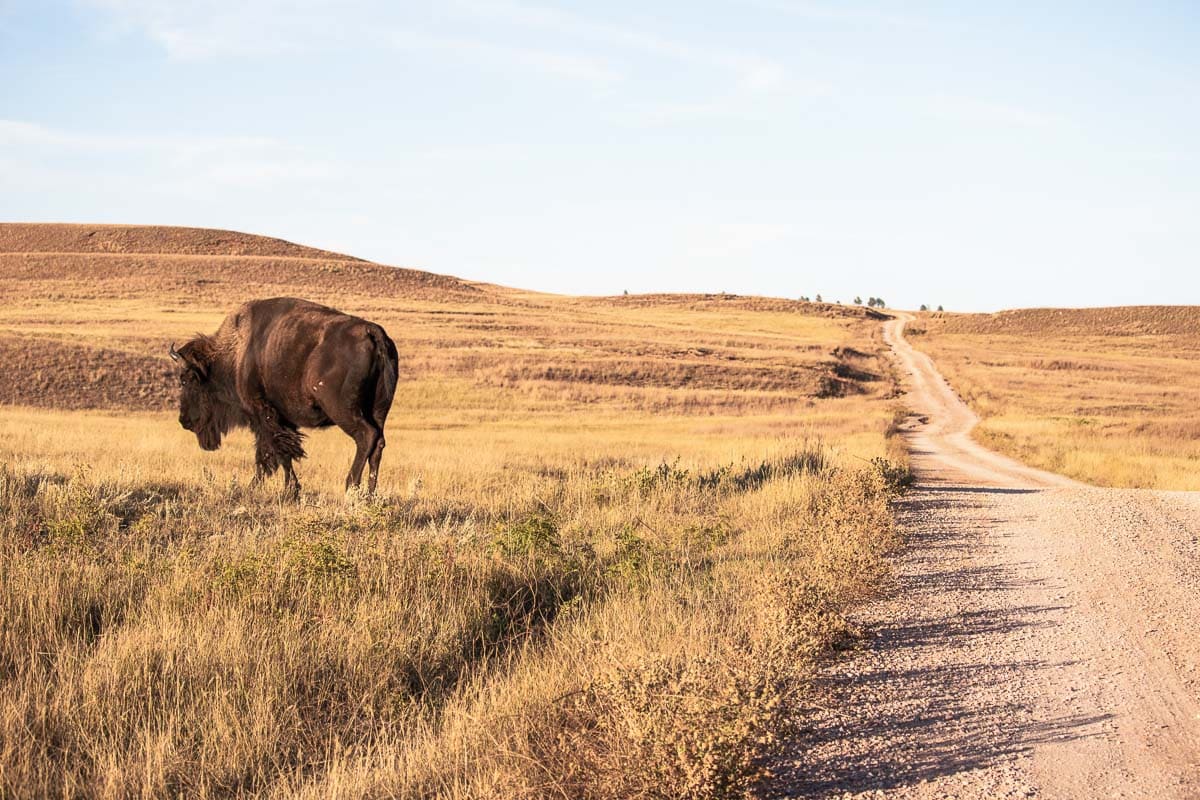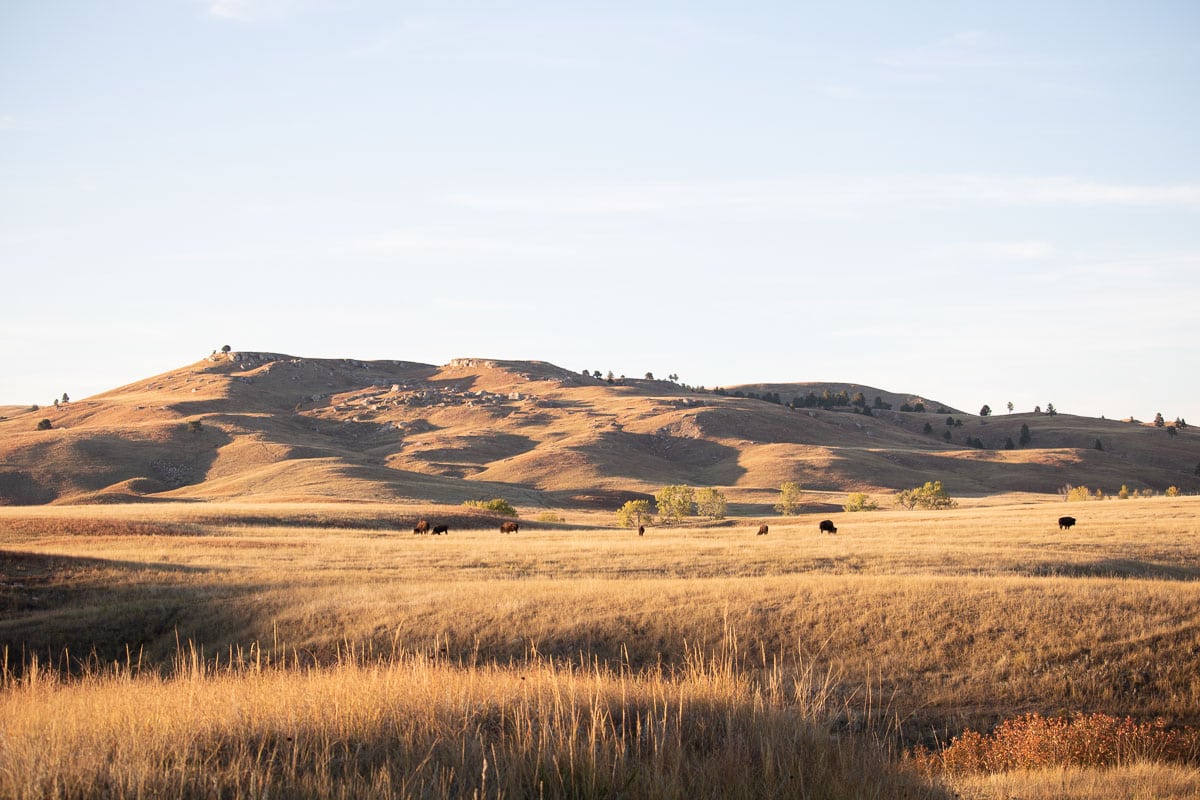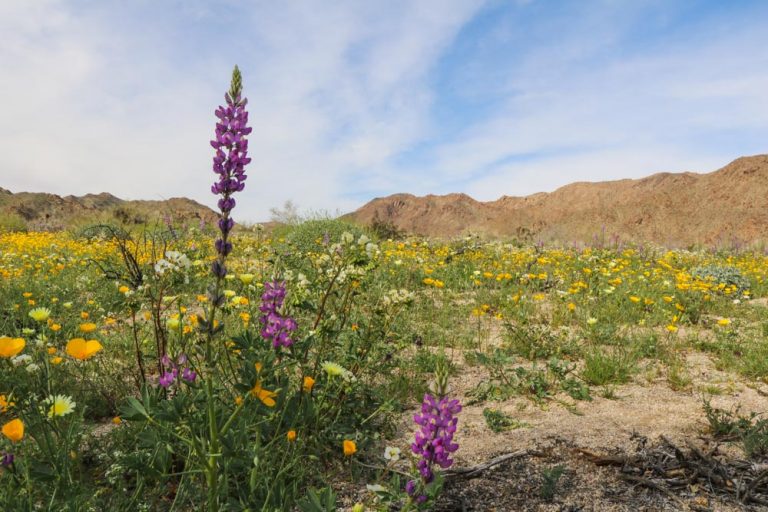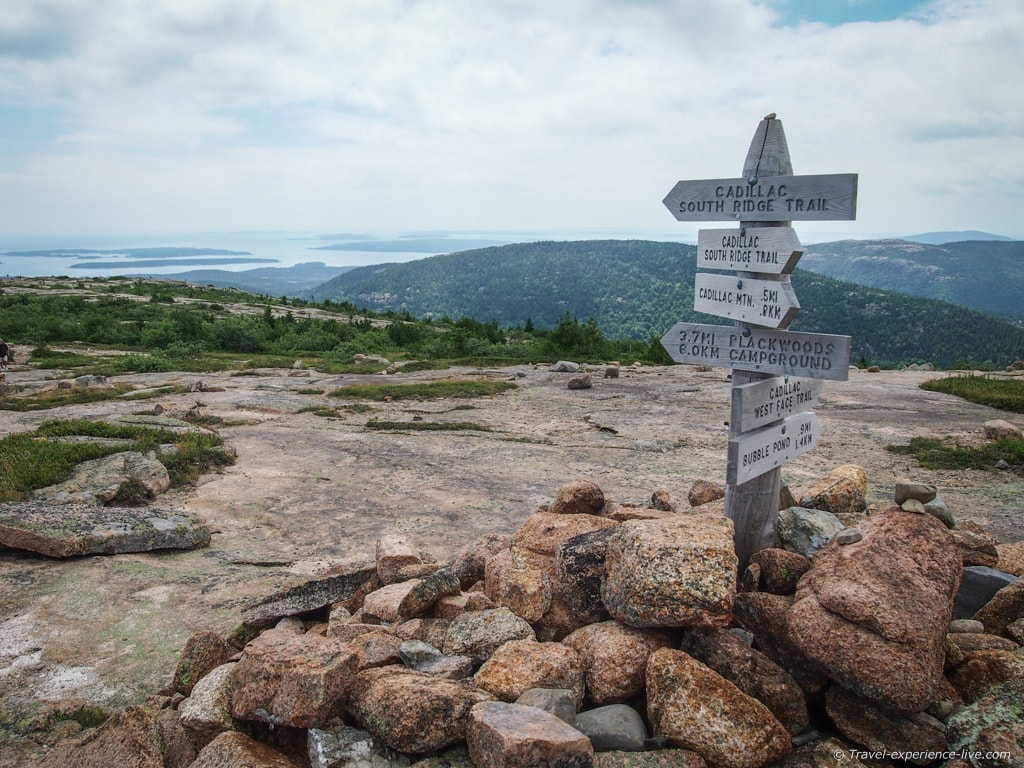Best Places to See Wildlife in Wind Cave National Park
Although Wind Cave National Park is one of the smaller national parks in America, it does have an amazing diversity of wildlife. The park’s intact mixed-grass prairie and forested hills are home to many iconic North American animals, including bison, prairie dogs, rattlesnakes and countless birds.
When visiting this fascinating South Dakota national park, joining a ranger-led cave tour is an essential thing to do. Wildlife viewing at Wind Cave is another. So, if you’re wondering where the animals are in Wind Cave National Park, you’ll find some answers below.
From roadside overlooks and campsites to backcountry trails and roads, wildlife can be seen pretty much all throughout Wind Cave National Park.
Thanks to the park’s wide open grasslands, it’s often possible to spot large mammals from quite a distance. Bison, deer and pronghorn thrive in the prairie and are commonly seen (even from far away).
Some other animals might require a bit more patience or luck to see. For example, elk, although large, are easier to hear than to see, especially during the fall rut. Rattlesnakes are ubiquitous at Wind Cave, but chances are you won’t see one. Birds are present everywhere, too, yet spotting a particular species might involve some effort and planning.
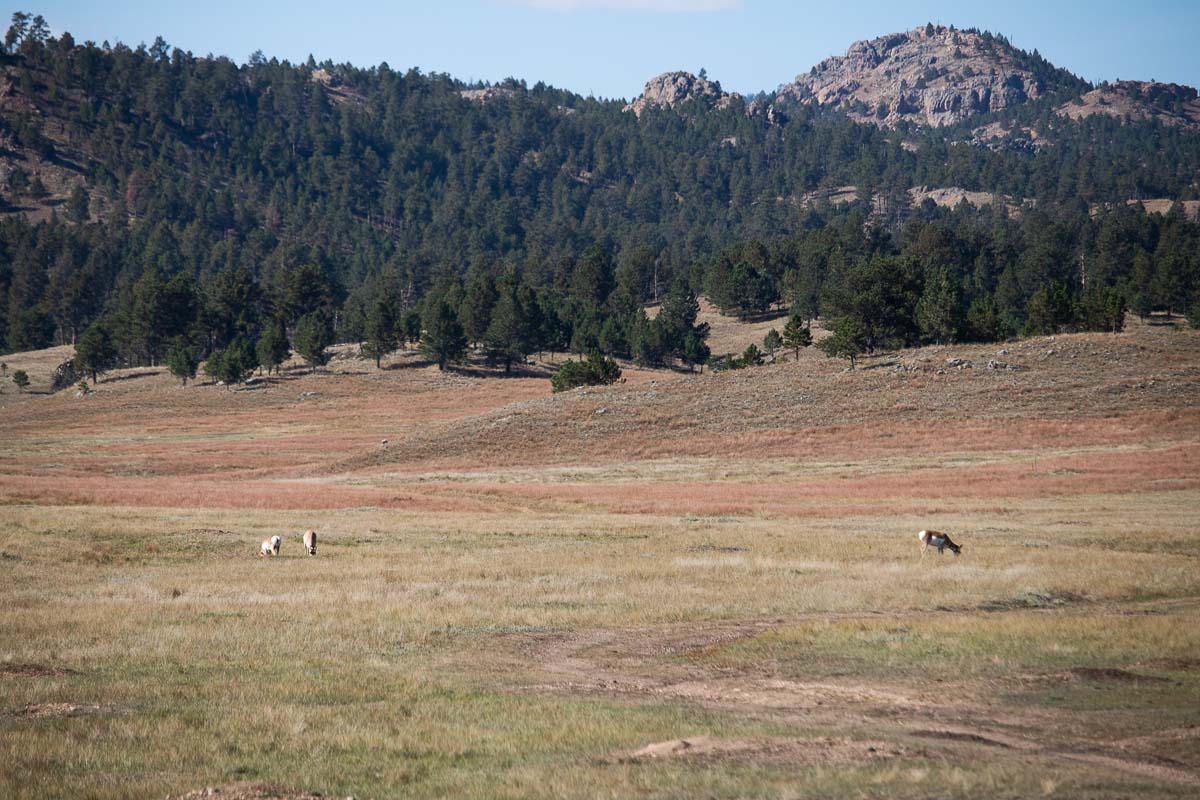
This blog post about the best places to see wildlife in Wind Cave National Park contains affiliate links. You can read more about our Terms of Use / Disclosure here.
Where to See Wildlife in Wind Cave National Park
Below, you’ll find an overview of the most iconic Wind Cave National Park wildlife and where you can spot these animals. This is the wildlife that most visitors come to see, the most “popular” animals if you will.
When spending a day in this park, you will see at least some of the following wildlife in Wind Cave National Park. The longer you stay, however, the greater your chances of seeing all of these high-profile animals during your visit.
With the exception of rattlesnakes, I saw all of the Wind Cave animals highlighted below during my one-day visit to the park, some in more than one place. While some animals, particularly prairie dogs and bison, are usually visible throughout the day, I do recommend getting up for sunrise or waiting until dusk for the best wildlife watching opportunities in Wind Cave. This is when you’re most likely to spot animals like coyotes, elk and maybe even a badger, skunk or fox.
American Bison
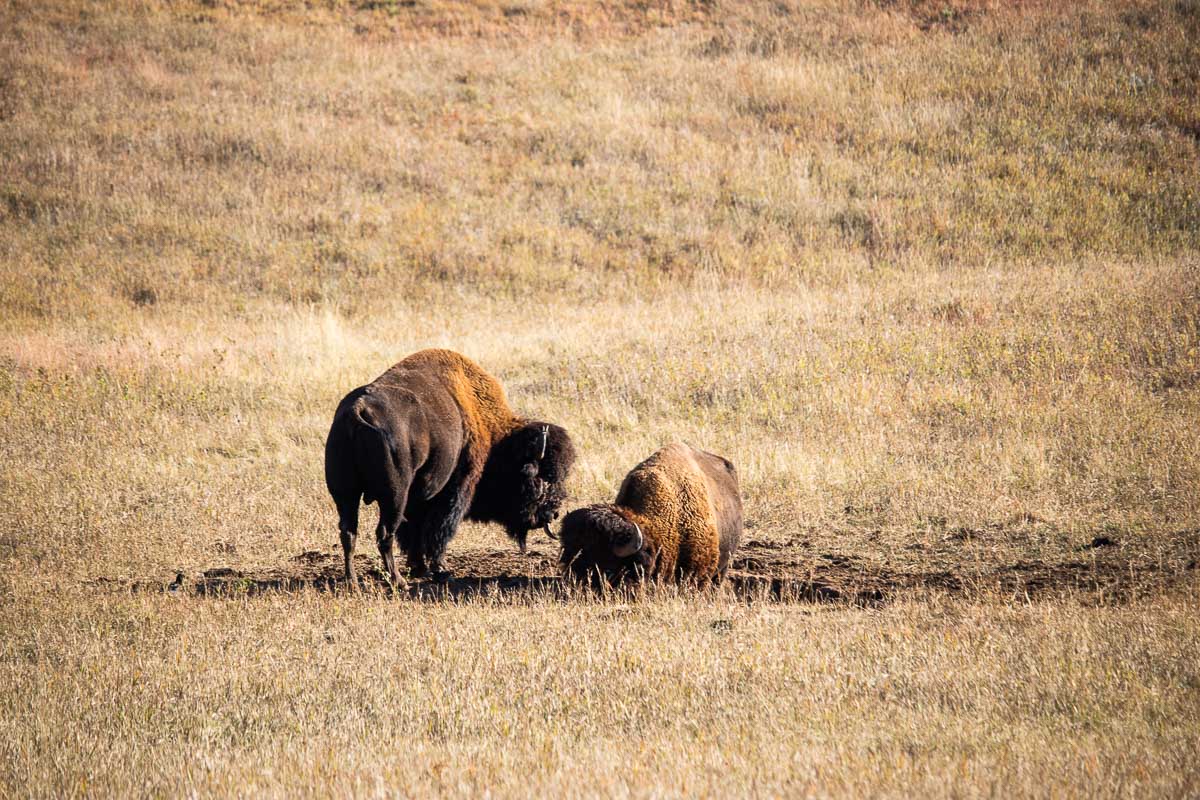
“Perhaps no other animal symbolizes the West as dramatically as the American bison,” the National Park Service says. There’s a reason the bison is the official national mammal of the United States.
This iconic animal came perilously close to extinction in the late-1800s—there were fewer than a thousand left in all of North America in 1900—but a devoted group of conservationists managed to save a few hundred animals.
After Wind Cave National Park was established in 1903, the American Bison Society transported fourteen animals—seven bulls and seven cows—from the New York Zoological Gardens, which is now the Bronx Zoo, to the national park in 1913.
In 1916, six additional American bison (Bison bison) were sent to Wind Cave from the large Yellowstone National Park herd. Those twenty original bison are the ancestors of the Wind Cave National Park bison herd today. That herd now consists of hundreds of individual animals.
You can see bison in Wind Cave National Park in a number of locations. Arguably the best area, however, is appropriately named Bison Flats. A few roadside overlooks offer a great vantage point to see these magnificent animals in their historic natural habitat.
Elsewhere in Wind Cave National Park, look for bison along the NPS 5 and 6 backcountry roads, which run through open prairie landscapes that attract some of the park’s bison herds. These remote roads are my favorite area in the park.
Read about the other U.S. national parks where you can see bison in the wild here. See this post for information about bison safety.
Coyotes
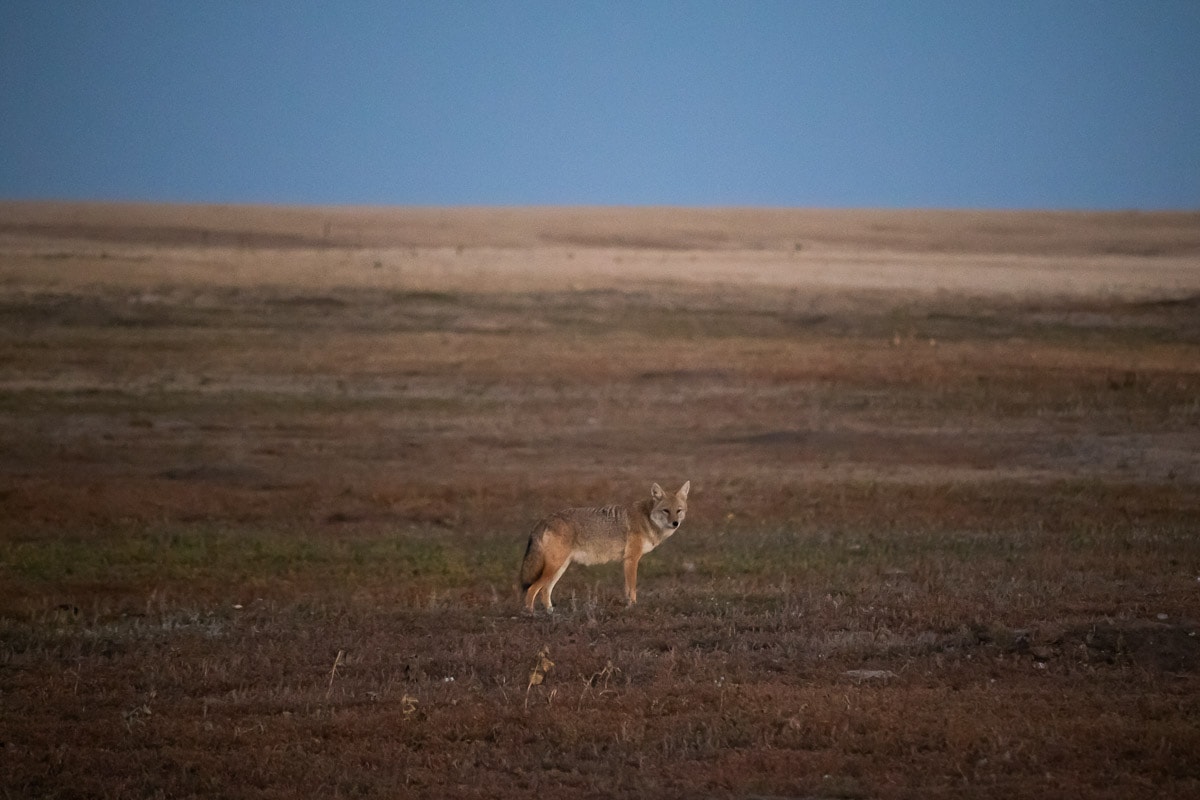
Even though there are several predators in Wind Cave National Park, including bobcats, eagles, badgers and even mountain lions, they are rarely seen. The easiest predators to see at Wind Cave are coyotes (Canis latrans).
These clever and adaptable animals are very much at home in the park’s prairie and forests. In fact, coyotes were historically known as “prairie wolves”, among other names.
Feeding on prey animals like rabbits, prairie dogs, mice and birds, coyotes certainly don’t lack any food sources in Wind Cave National Park. Coyotes roam the grasslands and hillsides throughout the park, both during the day and at night—the optimal times to see coyotes in Wind Cave are dawn and dusk.
It’s difficult to predict where you might see a coyote, but the best locations are near prairie dog towns and the hills along Highway 87.
Elk
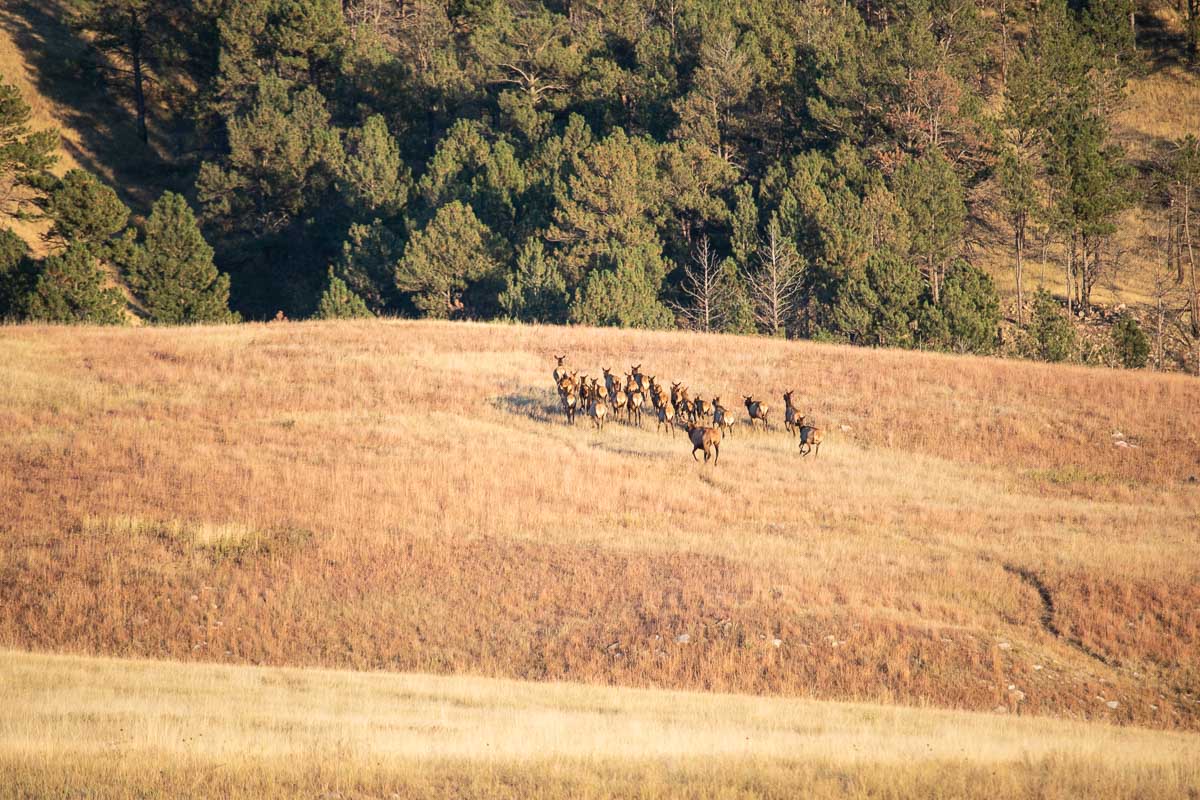
In fall, from mid-September through October, the somewhat-eerie sound of the bugles of bull elk (Cervus canadensis nelsoni) can be heard at twilight in certain areas in Wind Cave National Park.
Bugling occurs during the elk rut, which is the mating season of these large members of the deer family. This is when bulls compete for cows, fighting each other with their massive antlers and expressing themselves through loud bugles.
“This bugle heralds fall in the western United States and can be heard from dusk to dawn in the park each year,” the National Park Service says.
The elk are most active just before sunrise and just after sunset, which are the best times to listen for bugling bull elk at Wind Cave.
There are a couple of locations where opportunities to hear this iconic wilderness sound are best.
The easiest is at the appropriately named Elk Mountain Campground and the surrounding Elk Mountain Trail.
Although elk usually don’t venture into the campground itself, they do roam the nearby slopes to the west and the south, and can often be heard in the distance.
The second excellent place to see elk and listen to the bulls’ bugling is Boland Ridge in the far eastern part of the park. Located on the NPS 6 backcountry road, this remote area is home to herds of both elk and bison.
Additionally, you may also be able to hear elk bugling from roadside parking areas on Highway 87 or Highway 385. Stop at spots like the Beaver Creek pullout, Wind Cave Canyon Trailhead, Cold Brook Canyon or Bison Flats to listen.
As a large mammal, elk can be dangerous, especially during the spring calving and fall mating seasons. Read up on how to safely observe elk here.
Mule Deer
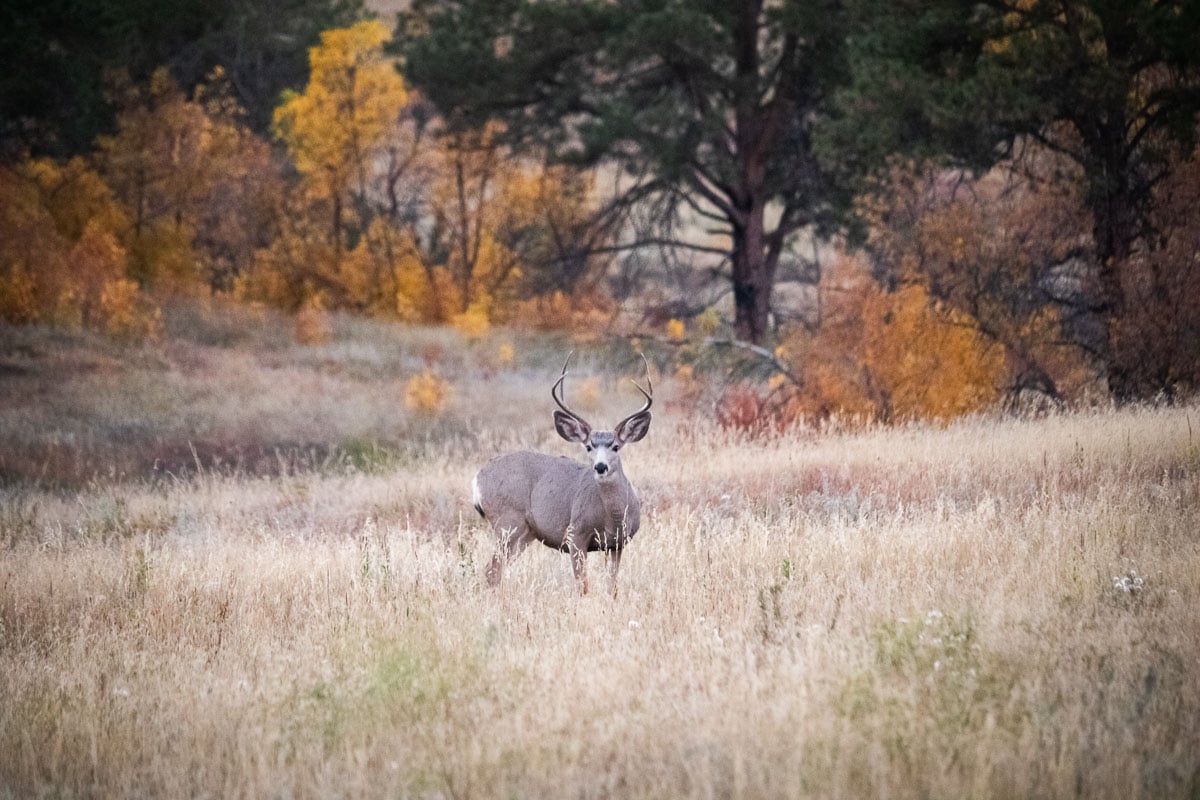
Named for their large ears, resembling mule ears, mule deer (Odocoileus hemionus) are close relatives of white-tailed deer. They live throughout the American west, perfectly adapted to the region’s harsh climate and wild landscapes.
Mule deer eat tender tree branches, shrubs and grasses, all of which are available in abundance in Wind Cave National Park. You can see mule deer pretty much anywhere in the national park, but they’re most common in wooded areas or at the meeting point of prairie and forest.
Look for mule deer around Elk Mountain Campground, along Highway 87, at Bison Flats and on both the NPS 5 and 6 backcountry roads.
Prairie Dogs
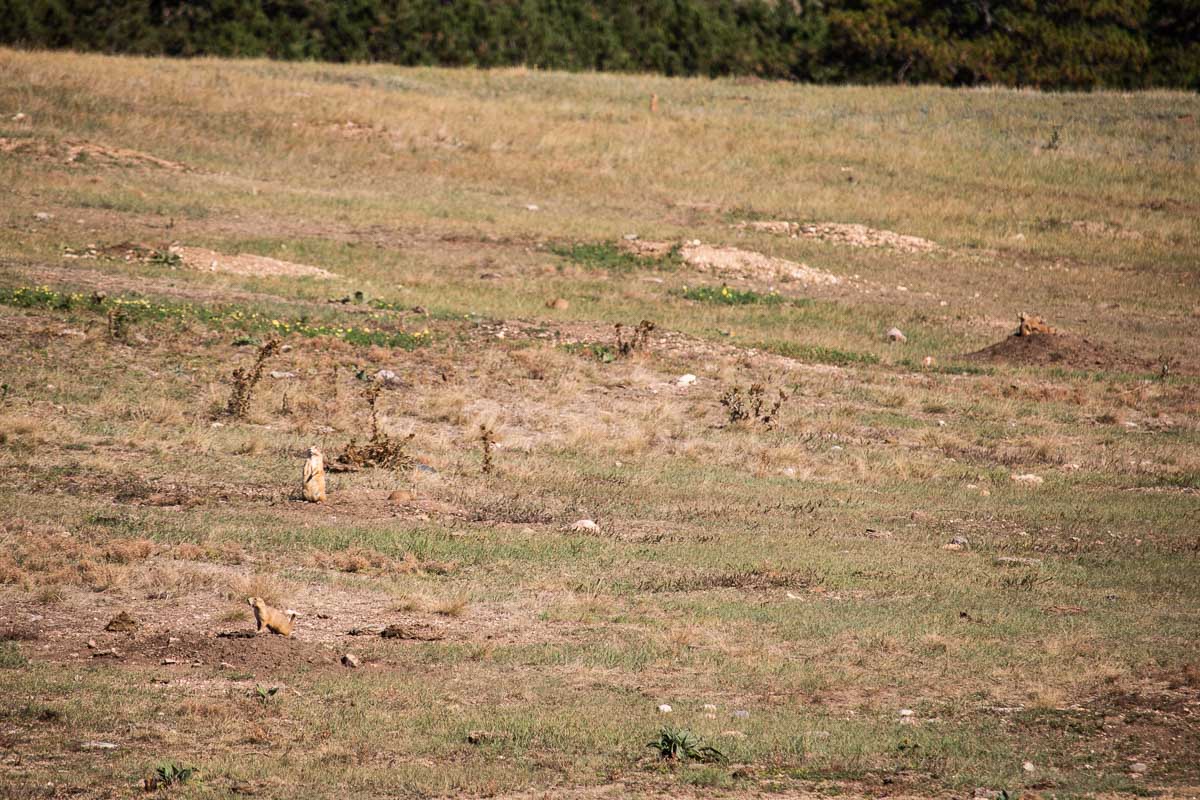
The counterpart of the massive bison that roam the prairie, black-tailed prairie dogs (Cynomys ludovicianus) are small rodents that are part of the squirrel family. Both animals are true icons of the Great Plains.
And they may be rather small, but prairie dogs are among the most visible animals in Wind Cave National Park.
You can find them in their so-called “towns” or colonies, sprawling collections of interconnected burrows, sleeping quarters and even toilets. Some prairie dog towns are so large, up to several hundred acres, that they consist of different “neighborhoods,” also known as “coteries.”
These popular Wind Cave animals are a lot of fun to watch for a while, as they pop in and out of their burrows, run across the meadows, and talk to each other through various calls.
Numerous prairie dog towns dot the prairie of Wind Cave National Park, some of which can be seen along backcountry hiking trails and the western part of NPS 5. You can also find prairie dog towns along Highway 87 and at Bison Flats.
Watching the iconic prairie dogs go about their daily business is without a doubt one of the top things to do in Wind Cave National Park.
Other animals are also attracted to prairie dog towns, whether it’s for easy housing opportunities or a meal. Watch for black-footed ferrets, coyotes, burrowing owls, hawks and rattlesnakes.
Fun fact: Early French explorers called these industrious rodents “petit chien”, or “little dog” in English. They got their name because of their call, which resembles a canine bark, not because of their physical resemblance to dogs.
Pronghorn
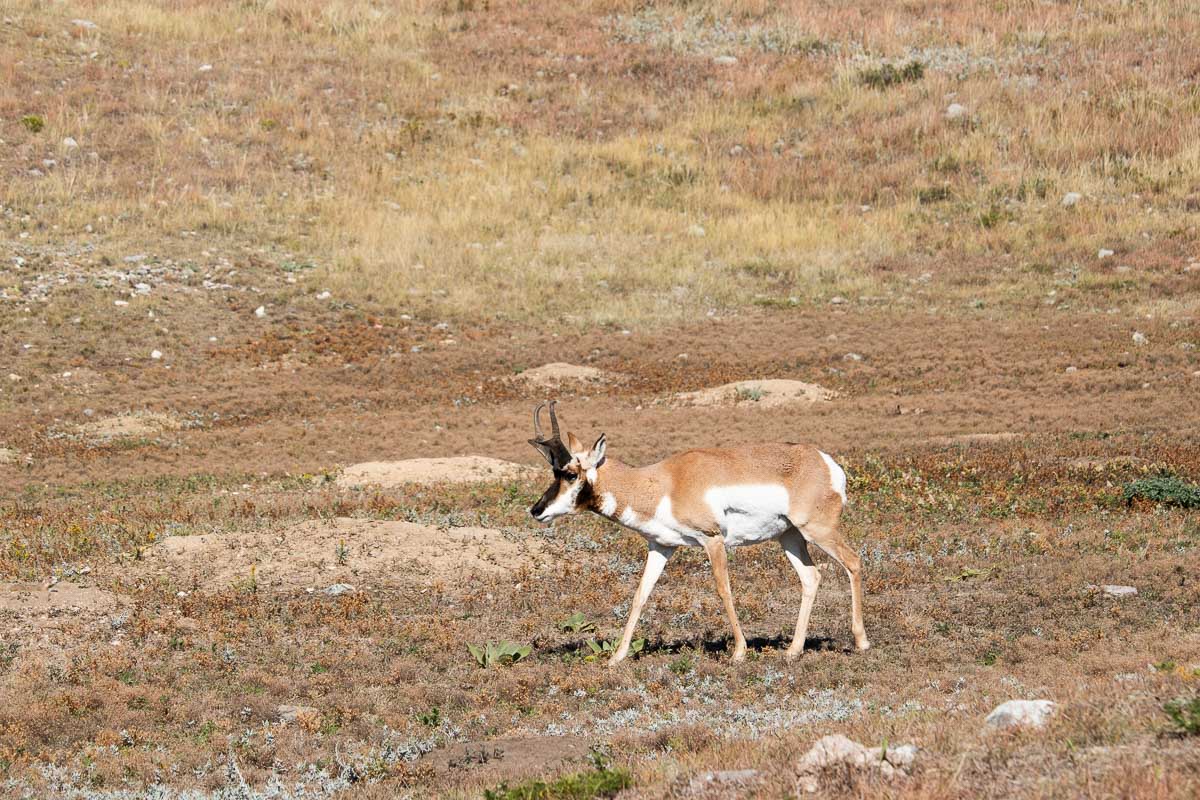
Also known as “pronghorn antelope,” the pronghorn (Antilocapra americana) is a remarkable animal that lives in the open grasslands of the American West. Only found in North America, it’s the “only living member of the family Antilocapridae and is most closely related to the giraffe,” the Park Service says.
Pronghorn are easy to recognize thanks to their brown-and-white fur and distinct prong-shaped horns. They feed on the many shrubs, forbs and grasses that grow on the plains.
The fastest land mammal in the Western Hemisphere, pronghorn can sustain speeds of up to 55 mph for half a mile. They’re able to run 45 mph for much longer distances, allowing them to escape virtually all predators on the open prairie.
It’s fairly easy to see pronghorn in Wind Cave National Park, especially because they prefer wide open spaces with good visibility. They frequent places with uninterrupted prairie like Bison Flats and the grasslands along NPS 5 and 6.
Additionally, prairie dog towns are also good places to look for pronghorn. This is because “the grass is more tender and nutritious” around prairie dog towns, according to the National Park Service.
Rattlesnakes
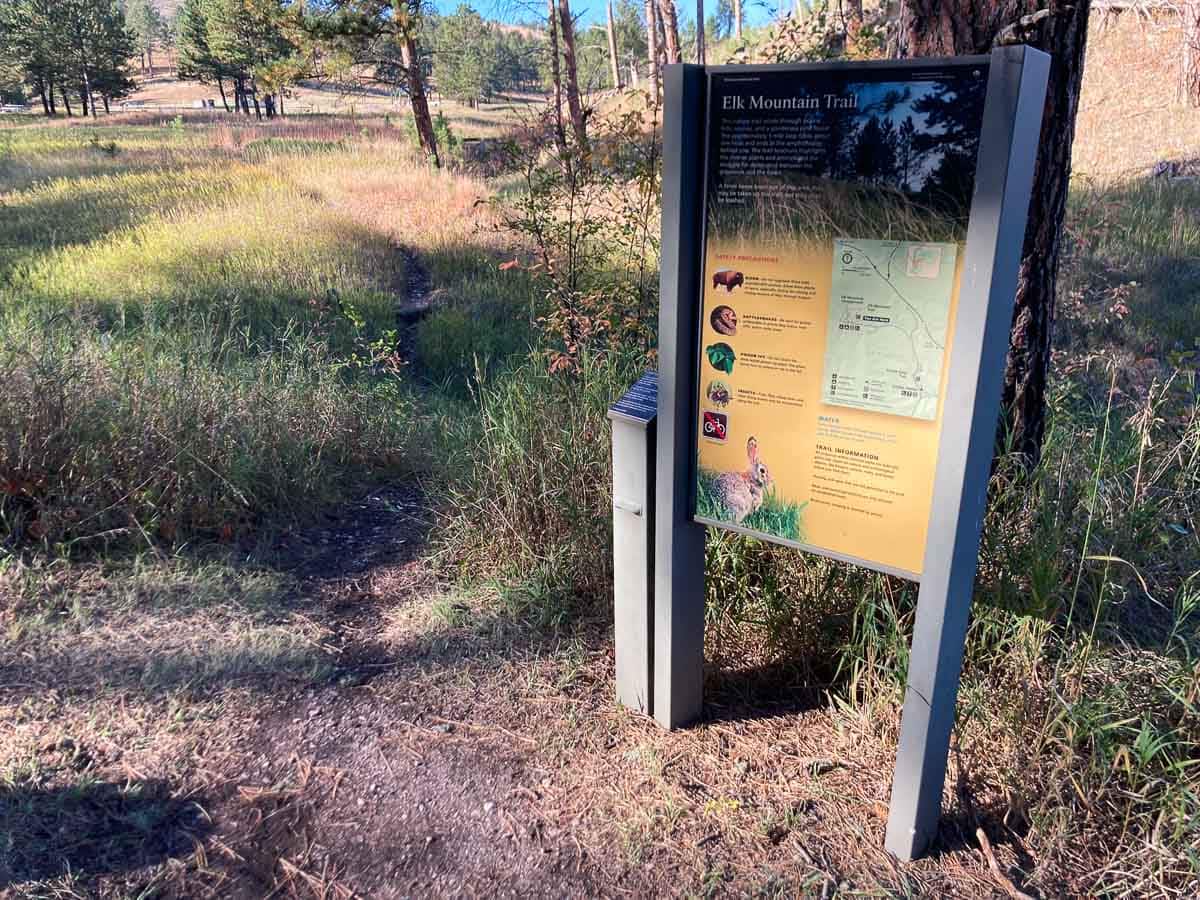
There’s only one species of venomous snake in Wind Cave National Park—the prairie rattlesnake (Crotalus viridis), which is also the only venomous snake in the state of South Dakota.
This may be the only animal you don’t want to see when visiting Wind Cave National Park. That said, however, watching a rattlesnake go about its business from a safe distance can be a very memorable experience.
Rattlesnakes are an integral part of the prairie ecosystem, after all, and nothing less than an iconic Great Plains animal.
Feeding on small animals like birds, prairie dogs, squirrels, chipmunks, mice and rabbits, prairie rattlesnakes thrive in the landscapes of Wind Cave National Park.
If you really want to see a rattlesnake in the park, your best chances are at prairie dog towns, which, in addition to being home to numerous prairie dogs, also attract other small animals.
It’s possible to encounter them essentially anywhere in the park, though, including on roads and hiking trails, at picnic areas, campgrounds and parking lots.
Watch out for rattlesnakes in tall prairie grass, underneath shrubs or trees, and in rocky areas. You’ll see rattlesnake warning signs throughout the park, including at most trailheads.
To avoid rattlesnake bites, always watch where you place your feet and hands. Be extra careful in areas of loose gravel, rocks and boulders, around shady trees and in tall grass. Rattlesnakes may also sunbathe in open places, including trails, roads and picnic areas. Learn about rattlesnake safety here.
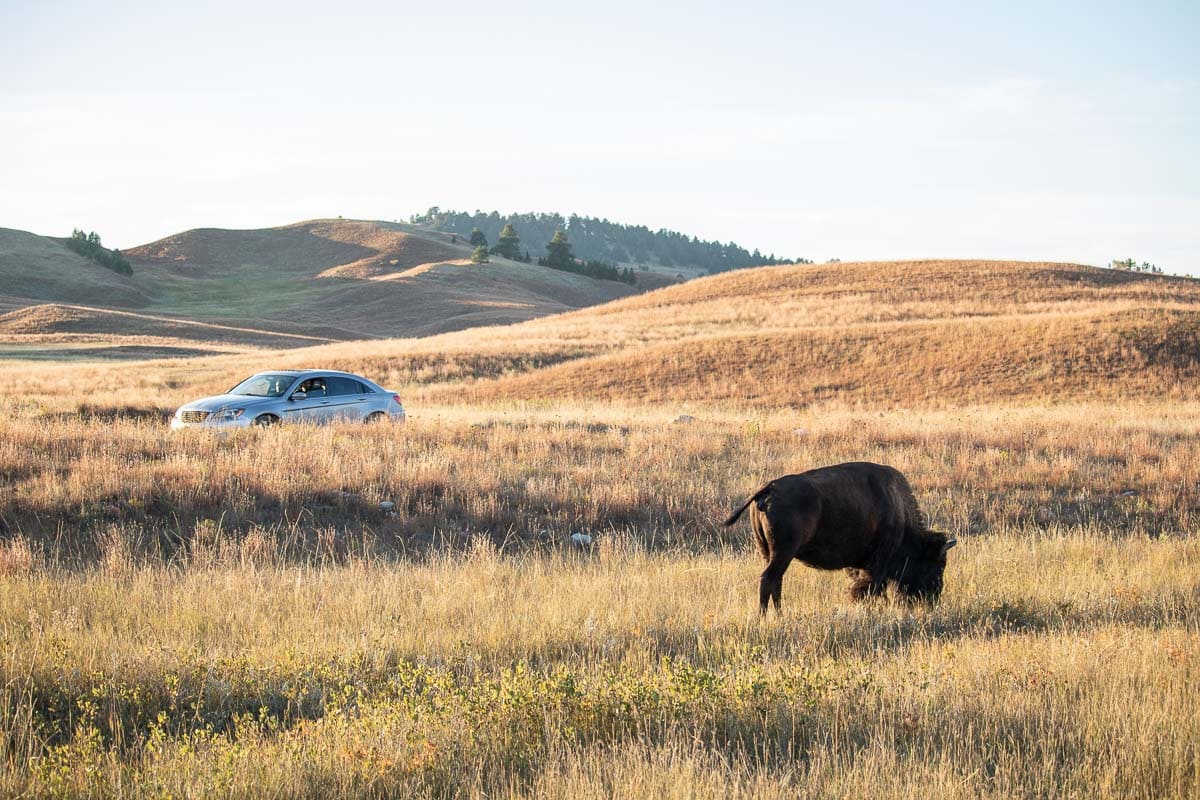
Other Iconic Animals in Wind Cave National Park
Besides the Wind Cave National Park wildlife above, there are countless other animals that call the park home.
Birds of prey are seen often, including golden eagles, hawks and vultures. Owls are present, too, from the tiny burrowing owls to the large great horned owls. In forested areas, watch for woodpeckers, northern flickers, western tanagers and wrens.
Black-footed ferrets, one of the rarest mammals in the world, also live in Wind Cave National Park, but spotting one is very difficult and should be considered a true privilege. During twilight hours, look for (semi-)nocturnal animals like badgers, foxes, skunks, raccoons, porcupines and even bats.
- American badgers
- Black-footed ferrets
- Chipmunks
- Mule deer
- Red foxes
- Striped skunks
- Burrowing owls
- Golden eagles
- Red-tailed hawks
- Turkey vultures
- Woodpeckers
- …
You can see an overview of all wildlife in Wind Cave National Park here on the park’s website.
List of the Best Places to See Wildlife in Wind Cave National Park
- Highway 87: coyotes, elk, mule deer, prairie dogs and birds
- Bison Flats: American bison, elk, mule deer, pronghorn, prairie dogs and birds
- Elk Mountain Campground: elk, mule deer and birds
- NPS 5 and 6: American bison, elk, mule deer, pronghorn, prairie dogs, badgers, rattlesnakes and birds
- Boland Ridge: American bison, elk and pronghorn
- Prairie dog towns: badgers, coyotes, prairie dogs, pronghorn, rattlesnakes, burrowing owls and other birds of prey
